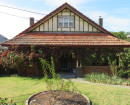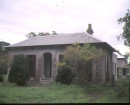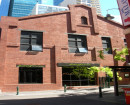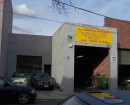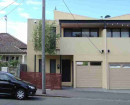PEACOCKS ROAD HOUSE RUINS
BUANGOR-BEN NEVIS ROAD BUANGOR, ARARAT RURAL CITY
-
Add to tour
You must log in to do that.
-
Share
-
Shortlist place
You must log in to do that.
- Download report
Statement of Significance
This record has minimal details. Please look to the right-hand-side bar for any further details about this record.
-
-
PEACOCKS ROAD HOUSE RUINS - History
The land surrounding the Great Western Highway in the area of the Peacock Road House was initially used by Europeans or grazing, predominantly of sheep. It was originally part of the Eurambeen or Mount Cole pastoral run which was established on 48,000 acres near Mount Cole by Colin and Alexander Campbell. It can be seen in the figure below (Figure 1) and originally included the Buangor Run, which was separated from it in 1849. The Campbell brothers migrated to Australia from Scotland in 1839 and established a 'profitable' pastoral run 'after minor conflict with local Aboriginals and aggressive overlanders". The run contained 200 cattle and 18,000 sheep. In 1847 Squatters were granted the pre-emptive right to purchase 640 acres of their run. Squatters frequently selected their pre-emptive right in the location of their original homestead and then those most well off would build homesteads in the same location (Murphy and Morris 2008. 24). With time, larger properties in the area were progressively subdivided although open grazing of cattle and sheep, with some grain farming, remained the predominant forms of agriculture in the locality.
Peacocks Road likely derives its name from the property of W. A. Peacock which the road serviced. In 1915, W.A. Peacock complained to local council over the poor condition of the road past his place, asking for a footbridge to be erected as his children had difficulty getting to school (The Ararat Advertiser 8 July 1915). World events were soon to eclipse Mr Peacock's bucolic challenges of school transport. In October of the same year, a Private W. I. Peacock of Buangor in the 16'h Battalion, was reported injured in lists from Europe (Ka/goorlie Western Argus 12 October 1915), and was moved to hospital in Malta later in the year (The West Australian 3 December 1915). In January of 1916 he was returned to active duty. This W. I. Peacock may well be the above complainant to council, or a family member. It appears his son left home a year later to enlist in the Great War too. On the 2S'h of June 1917, Bertie Henry Peacock of Buangor, Victoria enlisted in the 16'h Battalion at York, Western Australia (Figure 2). He gave his age as 23 years and 9 months, status as single, occupation as farm .hand, and listed his father Walter Peacock of Buangor Victoria as his next of kin. Bertie had grown up in the quiet surrounds of country Victoria, ventured across the continent to enlist, and would have arrived in Europe in time for the Battles of Ypres and Passchendale - among the most gruelling and horrific encounters of the First World War. The next we hear of Bertie is the following in the West Australian of Saturday 10 January 1920 "PEACOCK.-In loving memory of my dear brother, Private Bert Peacock 16th Battalion, died of illness (broncho-pneumonia), January 10, 1919, at Charleroi Belgium. His dear old smile, his kindly ways. Are pleasant to recall. He lived a life of sunshine here, And died beloved by all. Inserted by his loving sister, Maggie." The Peacock Road House ruin may not be the family home of Walter, Bertie and Maggie Peacock, but almost certainly would have formed part of the familiar landscape of their daily lives.
PEACOCKS ROAD HOUSE RUINS - Interpretation of Site
Site is likely the former location of a structure, likely a house, possibly late 19th/early 20th century in date. The allotment was identified through a historical land titles search as having had 2 timber dwellings on it in the late 1870's (Rood 2011) and it is possible that one of these was later upgraded to brick. Further background research and/or archaeological excavation is recommended to better interpret the site.
PEACOCKS ROAD HOUSE RUINS - Archaeological Significance
Peacocks Road House ruin has been assessed as being of low archaeological significance based on a lack of visible, archaeological features or deposits. The site has low-moderate archaeological potential; the low mounds that occupy much of the extent may contain further archaeological remains.
Heritage Inventory Description
PEACOCKS ROAD HOUSE RUINS - Heritage Inventory Description
Extensive scatter of building material (redbrick, bluestone, wood, corrugated iron) across a low mounded clearing at the eastern edge of a sugargum (?) plantation, approximately 800m west of Peacocks Road, 650m north of Buangor. Site extent is contained within the extent of associated exotic vegetation (lilies, pine trees)
-
-
-
-
-
FORMER COBB & CO STAGING STABLES
 Victorian Heritage Register H0259
Victorian Heritage Register H0259 -
Buangor Post Office & General Store
 National Trust
National Trust -
Buangor Avenue of Honour
 Vic. War Heritage Inventory
Vic. War Heritage Inventory
-
-


